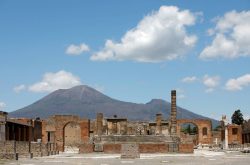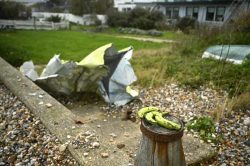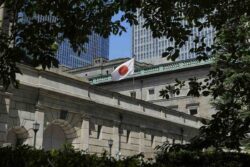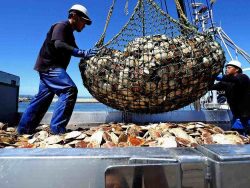12:33 JST, December 16, 2021
A series of tornadoes in the United States has caused extensive damage. There have been tornadoes in Japan as well, though not on the scale seen in the United States. It is necessary to think about how to protect ourselves on a daily basis.
The Southern and Midwestern parts of the United States that were hit by tornadoes this time are known for the frequency of such storms. Warm, moist air from the Gulf of Mexico collides with cold air from the north over the Great Plains, creating huge cumulonimbus clouds that can easily spawn tornadoes, mainly in May and June.
It is said that dozens of tornadoes may have occurred in eight states, including Tennessee and Arkansas. One huge tornado appears to have traveled hundreds of kilometers, destroying buildings on the ground as it went, clearly demonstrating its destructive power.
The temperature was said to be an unseasonable record high in Tennessee. In general, as the temperature rises, an environment is created in which cumulonimbus clouds develop and tornadoes are prone to form. It may be possible that global warming affected the occurrence of the tornadoes this time.
Among local residents, measures such as evacuating to the basement in case of emergency are widespread and routine. Despite this, the damage to central parts of towns and large distribution warehouses resulted in many deaths. Tornadoes out of their expected season may have caught people off guard to some degree.
While more than 1,000 tornadoes occur in the United States each year, only about 20 occur in Japan. However, taking land area into consideration, it cannot be said that the number is small. The threat of tornadoes cannot be ignored in Japan as its population density is high. In 2006, nine people were killed in Hokkaido.
Tornadoes in Japan occur most frequently in September, during typhoon season, but regardless of the season, they can occur in various places as cold fronts and low-pressure systems approach. Everyone should have basic knowledge about tornadoes.
As tornadoes are extremely local phenomena, they are difficult to predict. When a “tornado warning” is issued, it often ends up being a false alarm. However, measures should be taken in such cases to close storm doors and shutters, move away from windows and move to the first floor where safety is higher, among other steps.
Immediately before a tornado hits, there are often precursor phenomena, such as the surroundings becoming suddenly dark and large drops of rain or hail beginning to fall. It is important to heed these signs and consider early evacuation, especially in the case of outdoor gatherings or people working high above the ground.
Tornadoes sometimes travel at speeds of tens of kilometers per hour and can quickly destroy homes and overturn cars. It is vital to learn lessons from the massive damage caused by tornadoes in the United States and take steps to protect lives in Japan.
— The original Japanese article appeared in The Yomiuri Shimbun on Dec. 16, 2021.
"Editorial & Columns" POPULAR ARTICLE
-

Violations of Subcontract Law: Major Automakers Must Eliminate Old Practices
-

Local Governments’ Tax Revenues: Devise Ways to Correct Imbalances in Tax Sources
-

Heavy Rains in Asia: Support for Victims, Flood-Control Measures Urgently Needed
-

5 Japanese Business Dinner Mistakes to Avoid — and What They Taught Me About Business in Japan
-

New Nuclear Threat: China Seeking to Follow U.S., Russia in Military Expansion
JN ACCESS RANKING
-

Keidanren Chairman Yoshinobu Tsutsui Visits Kashiwazaki-Kariwa Nuclear Power Plant; Inspects New Emergency Safety System
-

Imports of Rare Earths from China Facing Delays, May Be Caused by Deterioration of Japan-China Relations
-

University of Tokyo Professor Discusses Japanese Economic Security in Interview Ahead of Forum
-

Japan Pulls out of Vietnam Nuclear Project, Complicating Hanoi’s Power Plans
-

Govt Aims to Expand NISA Program Lineup, Abolish Age Restriction





















